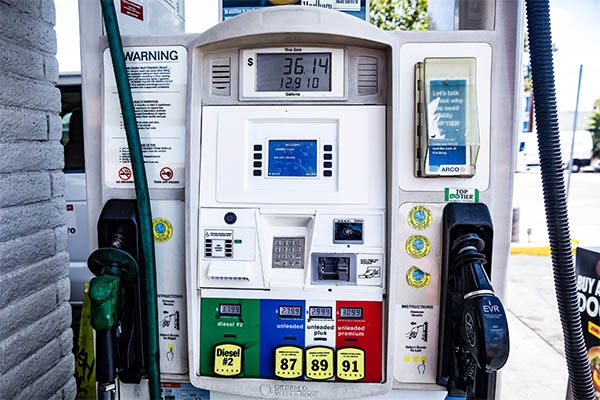We’re in a squeeze. Most of it is coming from gasoline prices. That’s why Wal-Mart announced, late in August, that it expected sales to be nearly flat at stores that had been open at least a year.
For millions of Americans— the majority— any increase in wages is going straight into the gas tank. A typical vehicle is driven about 12,000 miles a year. Millions of the 123 million vehicles on the road get well under 20 miles per gallon. The big sucking sound you hear isn’t jobs going to Mexico. It’s dollars flying into the your gas tank.
Journalistic hyperbole? Sadly: no.
To explore the impact of rising gasoline prices I built a third variation of my on-line fuel efficiency calculators. The first calculates how much you would need to have in investments to have the same benefit as increasing your fuel mileage. The second calculates how much of a raise or paid vacation you can give yourself for switching to a car that gets better mileage. This one, the third, calculates the loss of purchasing power, in dollars and as a percent of income, you may suffer if gasoline prices continue rising. It also calculates how much it takes to remedy the loss by driving fewer miles or switching to a car that gets more miles per gallon.
Suppose, for instance, that you earn $15 an hour, own a car that gets 15 miles per gallon, drive 15,000 miles a year, and have watched gasoline prices increase from $1.50 to $2.00 a gallon. What did it do to you?
It cut your purchasing power by 2.15 percent. In July the 12 month rate of increase for average weekly earnings was 2.3 percent.
The remedies? Drive 3,750 miles a year less. Or trade the 15-mpg car for one that gets at least 20.0 mpg.
That $15 an hour figure is important. According to the Department of Labor, it’s about what the average worker earns. Internal Revenue Service figures tell us that about 50 percent of all tax returns come from people who earn that amount or less. So there is a good chance that half of all households in America are losing purchasing power— which explains why sales at Wal-Mart are slow.
The same bottom half households pay about 4 percent of their income in Federal income taxes. Compare the two figures, 2 percent of purchasing power lost to rising gas prices and 4 percent income taxes sent to Washington and you get a powerful message about how little changes in income taxes mean to most Americans. It also tells you how much energy policy and price stability means.
So let’s ask another question.
What happens to the same worker if gasoline prices rise from $2.00 a gallon to $3.00 a gallon?
Answer: Her gasoline costs rise by $1,000 of after-tax income. She needs a pre-tax raise of 4.31 percent to restore her purchasing power.
Not too likely.
Alternatively, she can cut her driving by 5,000 miles a year or trade her guzzler for a 22.5-mpg car.
Not easily done.
Bottom line: For most Americans— certainly the 75 percent of households with Adjusted Gross Incomes of $56,000 or less— the most important pocketbook issue isn’t tax policy. It isn’t offers of tax cuts or tax increases.
It’s energy policy. What we do, personally and nationally, about energy is what will determine how fast we grow, how many jobs are created, how much our dollars will buy, and how secure we feel about our future.
Economic Indicators, July 2004:
http://www.gpoaccess.gov/indicators/04julbro.html
Tuesday, August 23, 2004: Burn Less Gas Without Spending More Cash:
http://www.dallasnews.com/sharedcontent/dws/bus/scottburns/columns/2004/stories/082404dnbusburns.a9401.html
Tuesday, August 10, 2004: New Investment Vehicle Could Burn Less Money:
http://www.dallasnews.com/sharedcontent/dws/bus/scottburns/columns/2004/stories/081004dnbusburns.166eb.html
Fuel Efficiency Calculator 1: What A Fuel Efficient Car Can Do For You
http://www.dallasnews.com/s/dws/bus/scottburns/calculators/fuelefficiency_cal.htm
Fuel Efficiency Calculator 2: Give Yourself a Raise for Fuel Efficiency
http://www.dallasnews.com/s/dws/bus/scottburns/calculators/giveyourselfaraise_cal.htm
Fuel Efficiency Calculator 3: The Impact of Higher Gasoline Prices On Your Standard of Living TBA
This information is distributed for education purposes, and it is not to be construed as an offer, solicitation, recommendation, or endorsement of any particular security, product, or service.
(c) Scott Burns, 2022
